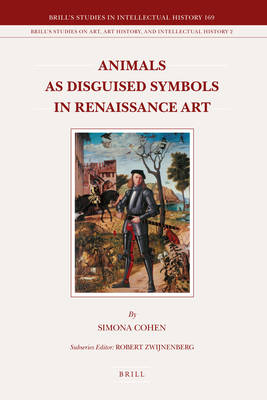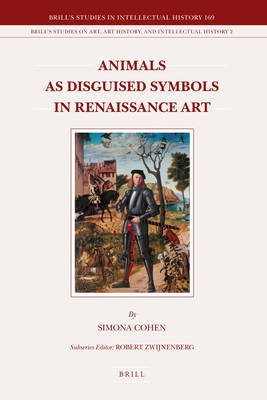
- Afhalen na 1 uur in een winkel met voorraad
- Gratis thuislevering in België vanaf € 30
- Ruim aanbod met 7 miljoen producten
- Afhalen na 1 uur in een winkel met voorraad
- Gratis thuislevering in België vanaf € 30
- Ruim aanbod met 7 miljoen producten
Zoeken
Omschrijving
The relationship between medieval animal symbolism and the iconography of animals in the Renaissance has scarcely been studied. Filling a gap in this significant field of Renaissance culture, in general, and its art, in particular, this book demonstrates the continuity and tenacity of medieval animal interpretations and symbolism, disguised under the veil of genre, religious or mythological narrative and scientific naturalism. An extensive introduction, dealing with relevant medieval and early Renaissance sources, is followed by a series of case studies that illustrate ways in which Renaissance artists revived conventional animal imagery in unprecedented contexts, investing them with new meanings, on a social, political, ethical, religious or psychological level, often by applying exegetical methodology in creating multiple semantic and iconographic levels.
Brill's Studies on Art, Art History, and Intellectual History, vol. 2
Brill's Studies on Art, Art History, and Intellectual History, vol. 2
Specificaties
Betrokkenen
- Auteur(s):
- Uitgeverij:
Inhoud
- Aantal bladzijden:
- 360
- Taal:
- Engels
- Reeks:
- Reeksnummer:
- nr. 169
Eigenschappen
- Productcode (EAN):
- 9789004171015
- Verschijningsdatum:
- 16/10/2008
- Uitvoering:
- Hardcover
- Formaat:
- Genaaid
- Afmetingen:
- 165 mm x 244 mm
- Gewicht:
- 975 g

Alleen bij Standaard Boekhandel
+ 242 punten op je klantenkaart van Standaard Boekhandel
Beoordelingen
We publiceren alleen reviews die voldoen aan de voorwaarden voor reviews. Bekijk onze voorwaarden voor reviews.











